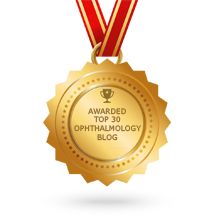
OCT Review
OCT Review
- Time Domain OCT (TD-OCT)
- Light echoes from each time delay measured sequentially
- Slow acquisition speeds, high signal-to-noise ratio, poor view of the choroid
- 400 A-scans per minute, 6 B-scans per macula, 10-μm resolution
- Spectral Domain OCT (SD-OCT)
- Light echoes from each time delay, all measured simultaneously (high-speed spectrometer)
- Fast acquisition speeds, low signal-to-noise ratio, view to the choroid possible
- 52,000 A-scans per minute, 20-40 B-scans per macula (up to 100), 5-μm resolution
- Enhanced Depth Imaging OCT (EDI-OCT)
- Zero delay line (ZDL) positioned at the inner retina
- The further from the zero-delay line (ZDL), the lower the signal resolution.
- EDI moves the ZDL closer to the choroid; negative images when the ZDL is crossed.
- Thinner layers permit deeper tissues to be closer to the ZDL.
- Full Depth or Combined Depth Imaging OCT (CDI-OCT)
- 100 B-scans averaged for a single line scan.
- 50 in standard SD-OCT mode and 50 in EDI mode
- Maximizes resolution of vitreoretinal and choroidal structures in a single scan
- Swept Source OCT
- Topcon DRI OCT-1 Atlantis
- Longer wavelength light source (1050 nm)
- Fast (100,000 A scans per second)
- Uniform sensitivity, allowing excellent visualization of structures from vitreous to sclera in one scan
- Automated segmentation (7 layers)
- 100,000 A-scans per second, 1-μm resolution
- 12-μm wide scans (vs. 9- and 6-μm scans)
- Image depth of 2.6 mm vs. 1.9 mm for EDI—even more ideal for choroidal tumors
- compiled & published by Dr Dhaval Patel MD AIIMS
